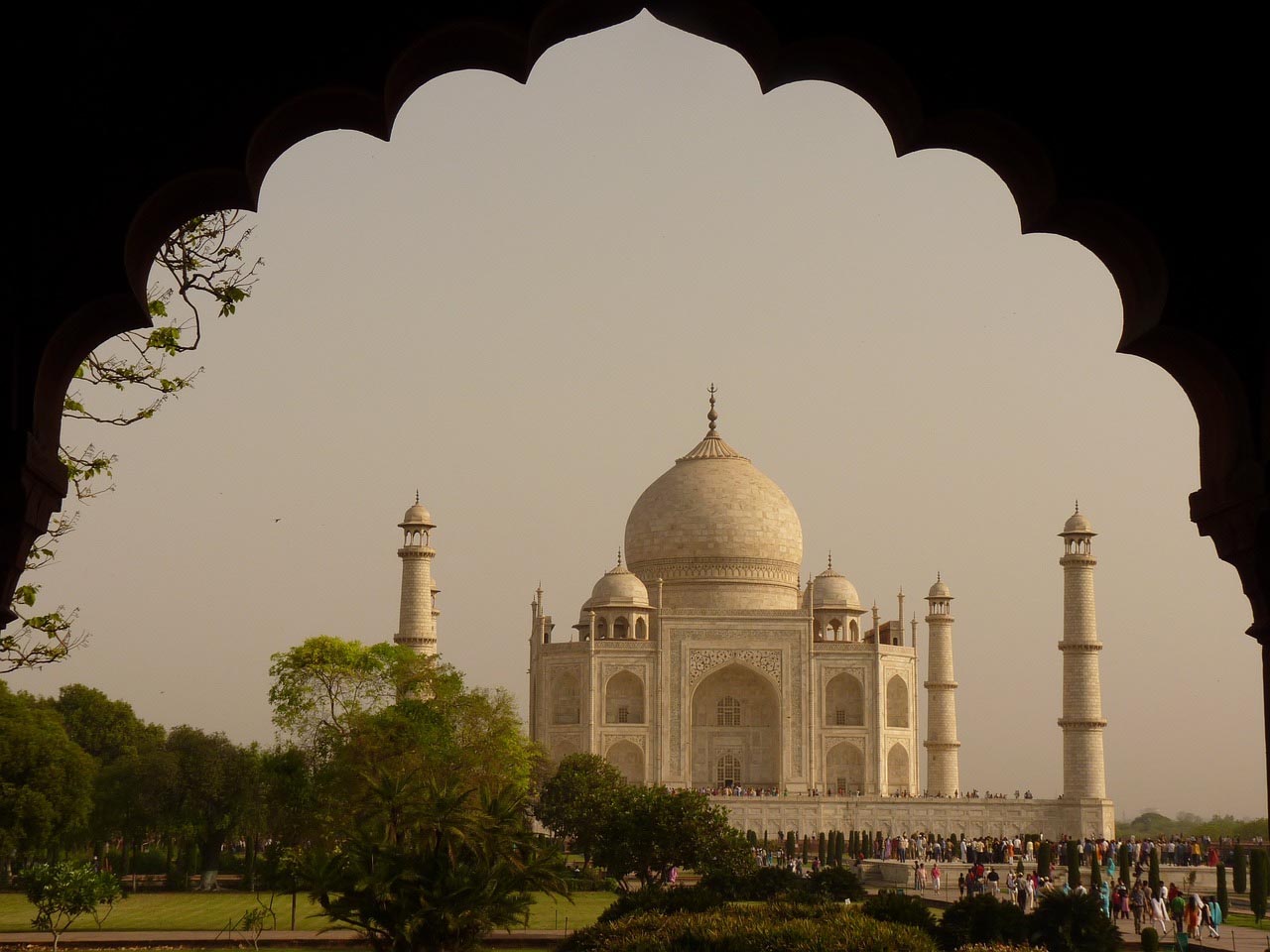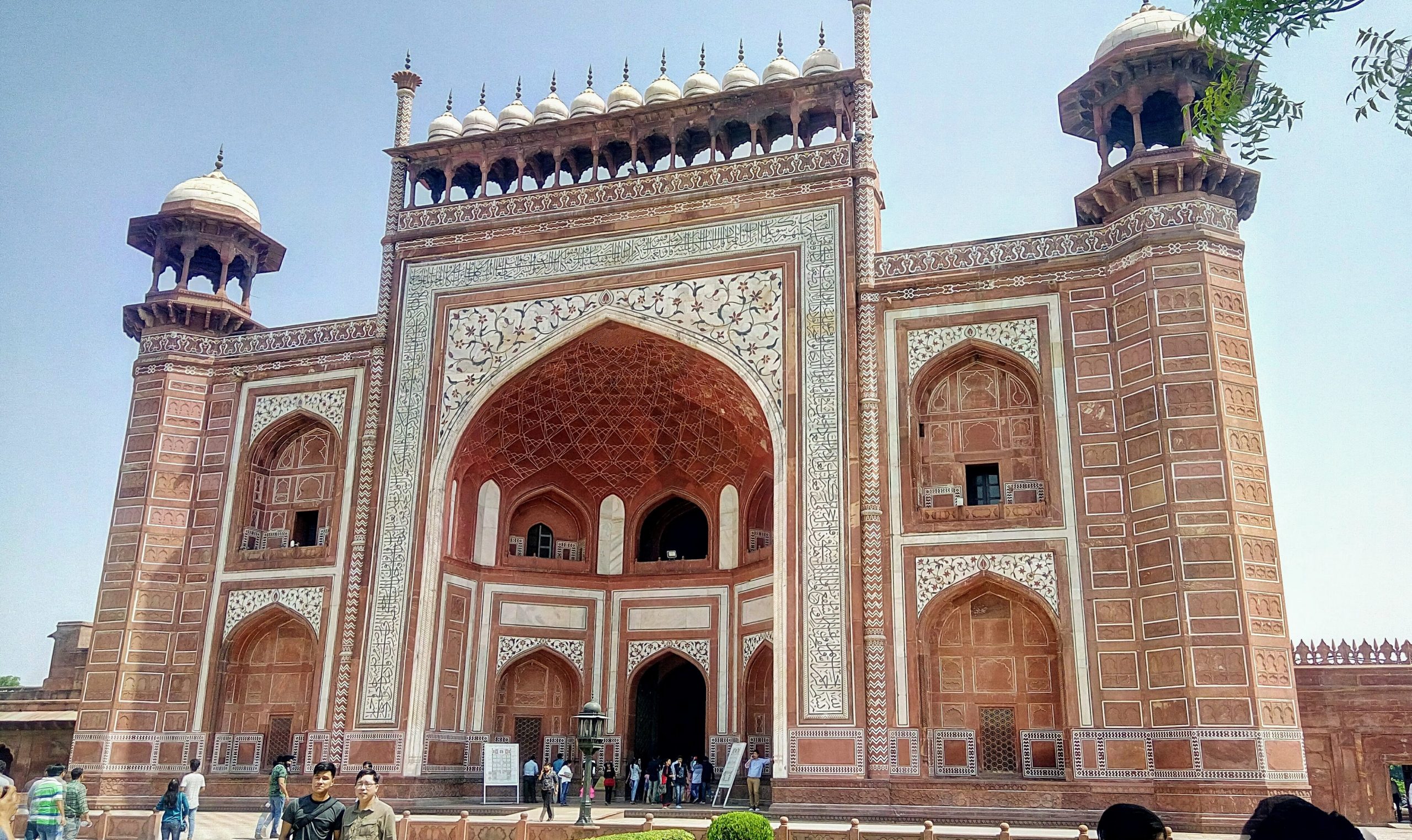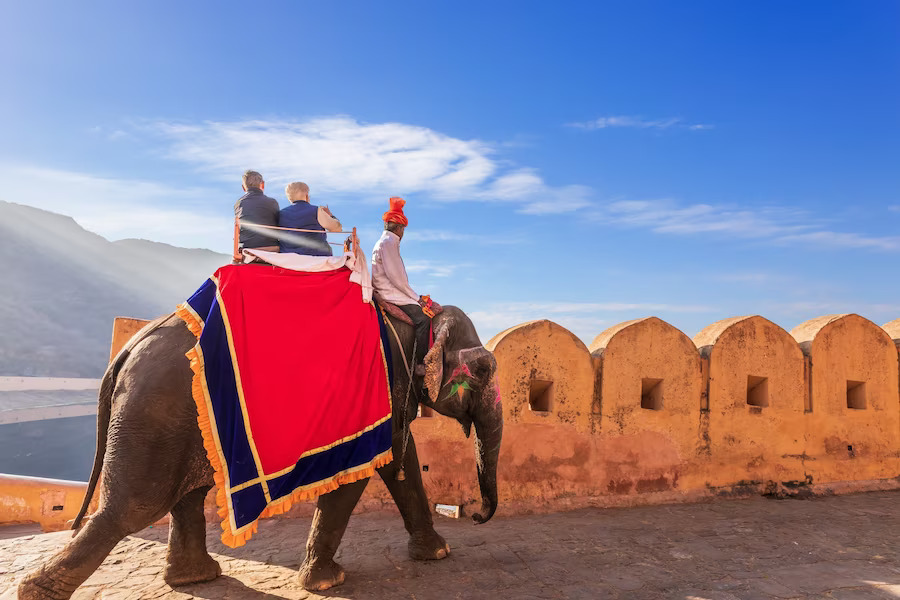
Kailash Manasarovar Aerial Darshan at Just @ Rs 35,000 Reserve Your Seat Now! Click Here

You only need to look at the Taj to realize something peculiar and extraordinary is happening. This magnificent white marble design is still one of the most amazing pieces of architecture humankind has ever created, and the legacy of the Taj Mahal has been running for about 400 years. This architectural wonder's romance, splendor, and grandeur shined brightly on full moon nights and cast a dramatic projection in the calm waters of the Yamuna when the sun was high. Rabindranath Tagore described the Taj as "a teardrop on the cheek of eternity." Today, tourists from around the globe still find a cause to travel to Agra to see the Taj Mahal and wonder about its timeless beauty.
Shah Jahan, the ruler of the Mughal Empire, constructed the Taj Mahal in honor of Mumtaz Mahal, who passed away in 1631 while delivering birth to their 14th child. Shah Jahan's third wife, Mumtaz, was renowned for her extraordinary beauty, and the monarch was rumored to be obsessed with her. It's believed that the emperor's abrupt grief over her passing caused him to go gray in just one night. The Taj was first constructed in 1632, but it wasn't until 1653 that the entire structure took on its present shape. But as destiny would have it, Aurangzeb, Shah Jahan's son, overthrew him shortly after the Taj Mahal was completed. He imprisoned him in the Agra Fort, where he lived the rest of his days, pining for the Taj. After passing away in 1666, Shah Jahan was interred in the Taj Mahal beside his beloved wife, Mumtaz.
Twenty thousand craftsmen from India, Europe, and Central Asia have been hired to work on the Taj Mahal, a UNESCO World Heritage Site, since 1983. The legacy of the Taj Mahal is known as the "jewel of Muslim art in India" and one of the most well-known works of art in human history.
Shah Jahan had the means to build this memorial with unrivaled grandeur because of the Mughal Empire, one of the wealthiest empires in the world at the time of his rule. So he wanted it to be stunning, but he also wanted it built fast.
Approximately 20,000 workers were sent in to increase production, and they were placed nearby in Mumtazabad, a town created specifically for them. Artisans with various levels of expertise were hired. Before beginning construction on the massive, 624-foot-long plinth or base, workers laid the groundwork. This would serve as the foundation for the Taj Mahal structure and the mosque and guest house structures that would flank it in red sandstone.
A second plinth supported the Taj Mahal, an octagonal building made of a brick wrapped in marble. The builders constructed a framework to rise higher, as is typical for most significant projects. Their selection of bricks for this scaffolding was peculiar, and scholars are still baffled by it.
The ornamental gardens, created along the outlines of the traditional Mughal Charbagh, are square gardens with water features and a marble plinth passing through their middle. The raised marble platform where the main tomb is located is at the complex's northern extremity. The purpose of the elevated podium is to elevate it higher than the other buildings in the compound as if reaching toward the very skies. It can be called an engineering marvel, the towers all have a small outer lean, and a white 40-meter-tall minaret graces each corner of the marble platform. This was done so that they would disintegrate in an earthquake and leave the substructure undisturbed.
An intricate Mughal building with tomb-like arches serves as Taj's main entry. It is mostly constructed of white marble. The arches have walls with geometric patterns, vaulted ceilings, and decorated calligraphy. The western building, which is truly a mosque, and its forerunner, a jawab, are both identical red sandstone structures on the other end of the structure.
The four uniform sides of the mausoleum are magnificently detailed in semi-translucent white marble with elaborate engravings and inlay work of valuable and semi-precious gems. The central structure is topped by one big bulbous dome in the center and four smaller domes on either side. The gravestone Mumtaz Mahal, which features exquisite inlay work and marble jali, is located directly beneath the main dome, and the cenotaph of her spouse is situated next to it. The design of the building allows sunlight to shine straight through the jaali and onto the gravestone. However, the real tombs of Shah Jahan and Mumtaz are hidden away in a basement chamber that is not accessible to the general public.

Tickets to access this gate can be purchased close to Saheli Burj. The Taj Mahal gate opens one hour before sunrise and closes about 45 minutes before sundown. This is the mausoleum's real main entrance, which overlooks the Agra Cantt and the entire city. Take notice of the lovely Fatehpur Begum red sandstone building outside this gate, devoted to one more of Shah Jahan's women. The courtyard of the building can hold about 200 people who want to give Namaz at once and is spread out across an open terrace.

The tickets can be purchased right at this entrance. The Taj Mahal is always open for visits an hour before sunrise and 45 minutes before dusk. A domed mausoleum, "Sirhi Darwaza," is perched on a raised plinth and faces Fatehabad. This is also the wives of Shah Jahan and Sirhindi Begum's tomb. The main building's 24 arches, enormous hall, plaza, and unusual eight-sided design make it an architectural wonder.
This gate is only for departure; no entry is permitted. This gate, which is only intended for pedestrians, overlooks Mumtazabad, the old town. A red sandstone tomb is nearby, replete with a large courtyard and a dome. The housekeeper who always kept Mumtaz Mahal company and took care of her is thought to be buried there.
Be aware that there are different lines for domestic and international visitors.
Every month, there are five chances to see the Taj Mahal at night, including two evenings before and after the full moon night. The Archaeological Survey of India determines all of these factors and the days and times for nighttime Taj viewing. Eight groups of approximately 50 individuals view the Taj Mahal at night for roughly 30 minutes each, between 8:30 PM and 12:30 PM. The maximum number of guests per night is thus 400.
Visitors wishing to see the Taj Mahal at night must arrive at the Shilpagram complex 30 minutes before their appointed time. They can only see the Taj Mahal from a distance at night because they are not permitted to enter the landmark. Before the night viewing begins, all personal items and baggage must be left at a security desk. During the night, video cameras are not permitted inside the monument.
While the Taj was being constructed, the emperor is said to have shunned court festivities, put off the marriages of two of his boys, and paid regular visits to his wife's interim resting place (in Burhanpur). As a result of these stories, the Taj Mahal is often called an "architectural symbol of love." Others claim that the Taj is not a memorial to a deceased loved one and that Shah Jahan may have still erected a structure of a similar design even if his wife had not passed away.
Another theory contends that the legacy Taj Mahal is a symbolic depiction of a Supreme Throne—the seat of God—on the Day of Judgment based on the metaphoric specificity of the Qur'anic and other inscriptions and the emperor's love of thrones. A third point of view contends that the monument was created to resemble a miniature paradise home. According to the "paradisiacal mansion" idea, the Taj was a vain endeavor constructed to exalt Mughal rule and the ruler himself.
While Shah Jahan's abdication was not without incident, his ascent to the kingdom was. The monarch passed away as a prisoner instead of a dictator. Shah Jahan could only see the Taj Mahal in the distance because he was confined to the Agra Fort under house arrest for eight years before his demise in 1666. But the magnificent marble monument he created "with the thought of perpetuity in mind" still stands today, more than 350 years after it was built. It is considered the most recognizable structure in the globe. Aside from being buried next to his beloved wife in the Taj Mahal, the ruler formerly known as Padshah—King of the World—also enjoys enduring renown for having commissioned the most lavish and iconic mausoleum in history.
In all of Indo-Islamic architecture, the Taj Mahal is regarded as the pinnacle of architectural accomplishment. Its well-known architectural beauty is characterized by a rhythmic arrangement of solids and gaps, concave and convex surfaces, and light shadow. Additional decorative elements like arches and domes enhance the artistic quality.
The Taj Mahal rises above the river's banks like a lone tear hanging on the cheek of eternity. He stresses that Shah Jahan was aware that his notoriety and glory would wane over time. He therefore constructed this monument to memorialize his grief. Years have passed, the king is no longer alive, and his kingdom is now extinct.
The Taj Mahal is regarded as the Mughal Empire's most significant building achievement today. It also features some of the best Indo-Islamic sepulchral structures. The grounds and structure were designed by the Indian architect Ustad-Ahmad Lahori.
The majestic Taj Mahal, the most well-known structure in all of India, is located in the city of Agra on the Yamuna riverbank and is surrounded by a sizable, symmetrical park. Millions of visitors arrive each year from all over the globe to take in its beauty and learn about how it was built.
Go back to main blog page RECENT POST
RECENT POST  10 Best Places in India to do Activities with Family
13 Feb 2024
10 Best Places in India to do Activities with Family
13 Feb 2024
 Top 20 India's Beaches for Blissful Retreats
24 Nov 2023
Top 20 India's Beaches for Blissful Retreats
24 Nov 2023
 15 Photography Tips for Wildlife Travellers
28 Jul 2023
15 Photography Tips for Wildlife Travellers
28 Jul 2023
 Mughal Empire to UNESCO Heritage Site: Legacy of the Taj Mahal
15 Jul 2023
Mughal Empire to UNESCO Heritage Site: Legacy of the Taj Mahal
15 Jul 2023

All our trips are authentic and carefully designed

Our trips are flexible to alter according to your demand

Our experts have first hand knowledge about destinations

We offer best value for your money invested in touring with us.

With Max Holidays you complete travel in peace of mind
Put us on work to plan your next travel. Send your details to our experts now to get a free travel plan with quote